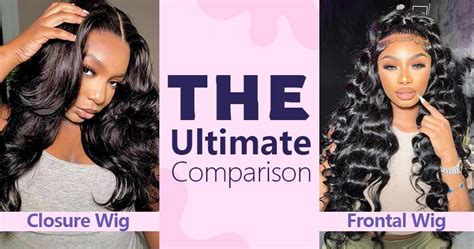Introduction
In the realm of hair restoration, two techniques reign supreme: closure and frontal. Both offer unique advantages and disadvantages, making the decision between them a crucial one for individuals seeking a natural-looking, long-lasting solution to hair loss. This comprehensive guide will delve into the intricacies of each technique, providing an in-depth analysis of their benefits, drawbacks, and suitability for different individuals.

What is Closure?
A closure is a small, horseshoe-shaped hairpiece that is sewn or bonded to the scalp to cover a specific area of hair loss. It is typically used to conceal thinning areas on the crown or vertex of the head and can be made from human hair, synthetic fibers, or a combination of both.
Benefits of Closure
- Natural Appearance: Closures are designed to blend seamlessly with existing hair, creating a natural and undetectable appearance.
- Versatile: Closures can be styled in various ways, allowing for a wide range of hairstyles and customization options.
- Long-Lasting: With proper care, closures can last for several months or even years.
Drawbacks of Closure
- Limited Coverage: Closures only cover a specific area, making them unsuitable for individuals with extensive or diffuse hair loss.
- Maintenance: Closures require regular maintenance, such as washing, conditioning, and styling, which can be time-consuming.
- Cost: Closures can be more expensive than other hair restoration techniques, especially if made from high-quality human hair.
What is Frontal?
A frontal is a larger hairpiece that covers the entire hairline from ear to ear. It is typically sewn or bonded to the scalp and can be made from human hair, synthetic fibers, or a combination of both. Frontals provide a more comprehensive hair restoration solution than closures.
Benefits of Frontal
- Wide Coverage: Frontals cover the entire hairline, providing a natural and seamless appearance for individuals with extensive hair loss.
- Versatility: Frontals allow for greater styling flexibility, as they cover the entire front of the scalp.
- Convenience: Frontals require less maintenance than closures, as they do not need to be parted or styled daily.
Drawbacks of Frontal
- Less Natural Appearance: Frontals can sometimes appear less natural than closures, especially if not properly installed or styled.
- Cost: Frontals are typically more expensive than closures due to their larger size.
- Installation: The installation of frontals can be more complex and time-consuming than closures.
Which Technique is Right for You?
The choice between closure and frontal depends on the individual’s specific needs and preferences. Closures are a good option for those with limited hair loss or who prefer a more natural appearance. Frontals are ideal for individuals with extensive hair loss or who want the convenience of a full hairline restoration.
Comparison of Closure and Frontal
| Feature | Closure | Frontal |
|---|---|---|
| Coverage | Specific area | Entire hairline |
| Natural Appearance | High | Moderate |
| Versatility | Moderate | High |
| Maintenance | High | Low |
| Cost | Lower | Higher |
| Installation | Simple | Complex |
Pros and Cons of Closure and Frontal
Closure
Pros:
- Natural appearance
- Versatile
- Long-lasting
Cons:
- Limited coverage
- Maintenance required
- Cost
Frontal
Pros:
- Wide coverage
- Versatile
- Convenient
Cons:
- Less natural appearance
- Cost
- Complex installation
Frequently Asked Questions
- Which technique lasts longer? Both closures and frontals can last for several months or even years with proper care.
- Is closure or frontal more natural looking? Closures typically provide a more natural appearance due to their smaller size and seamless blending with existing hair.
- How much does closure or frontal cost? The cost of closure or frontal varies depending on the type of hair used, the size, and the installation method.
- Can I style closure or frontal with heat? Yes, both closures and frontals can be styled with heat, but it is important to use heat protectant spray to avoid damage.
- How often should I wash closure or frontal? Closures require more frequent washing than frontals, typically once or twice a week. Frontals can be washed less frequently, about once every two weeks.
- Can I swim or exercise with closure or frontal? Yes, you can swim or exercise with closure or frontal, but it is important to protect it from chlorine or sweat by wearing a swimming cap or headband.
Conclusion
Closure and frontal are both effective hair restoration techniques that offer unique advantages and disadvantages. By carefully considering the factors outlined in this guide, individuals can make an informed decision about the best technique for their individual needs and preferences.
